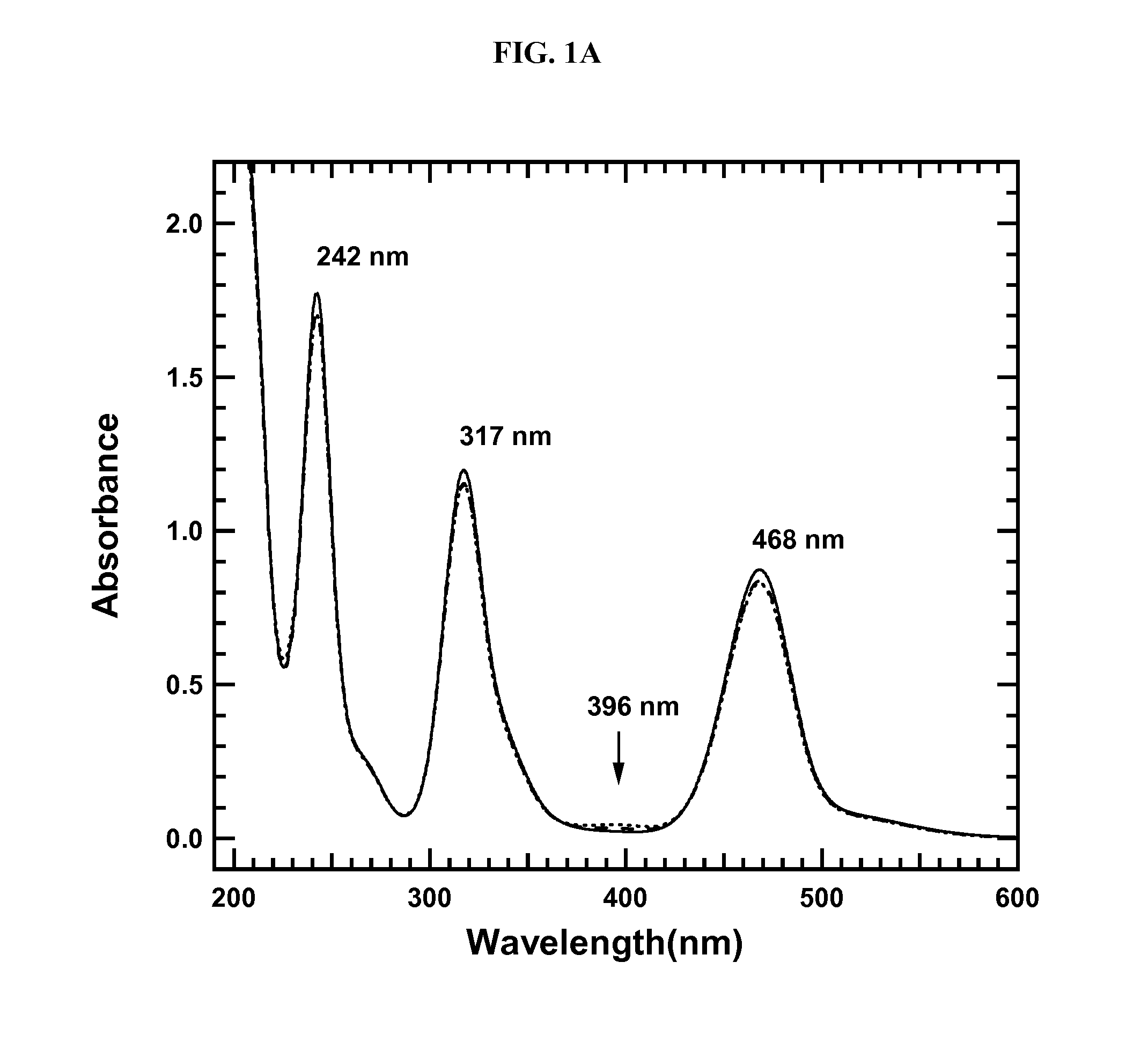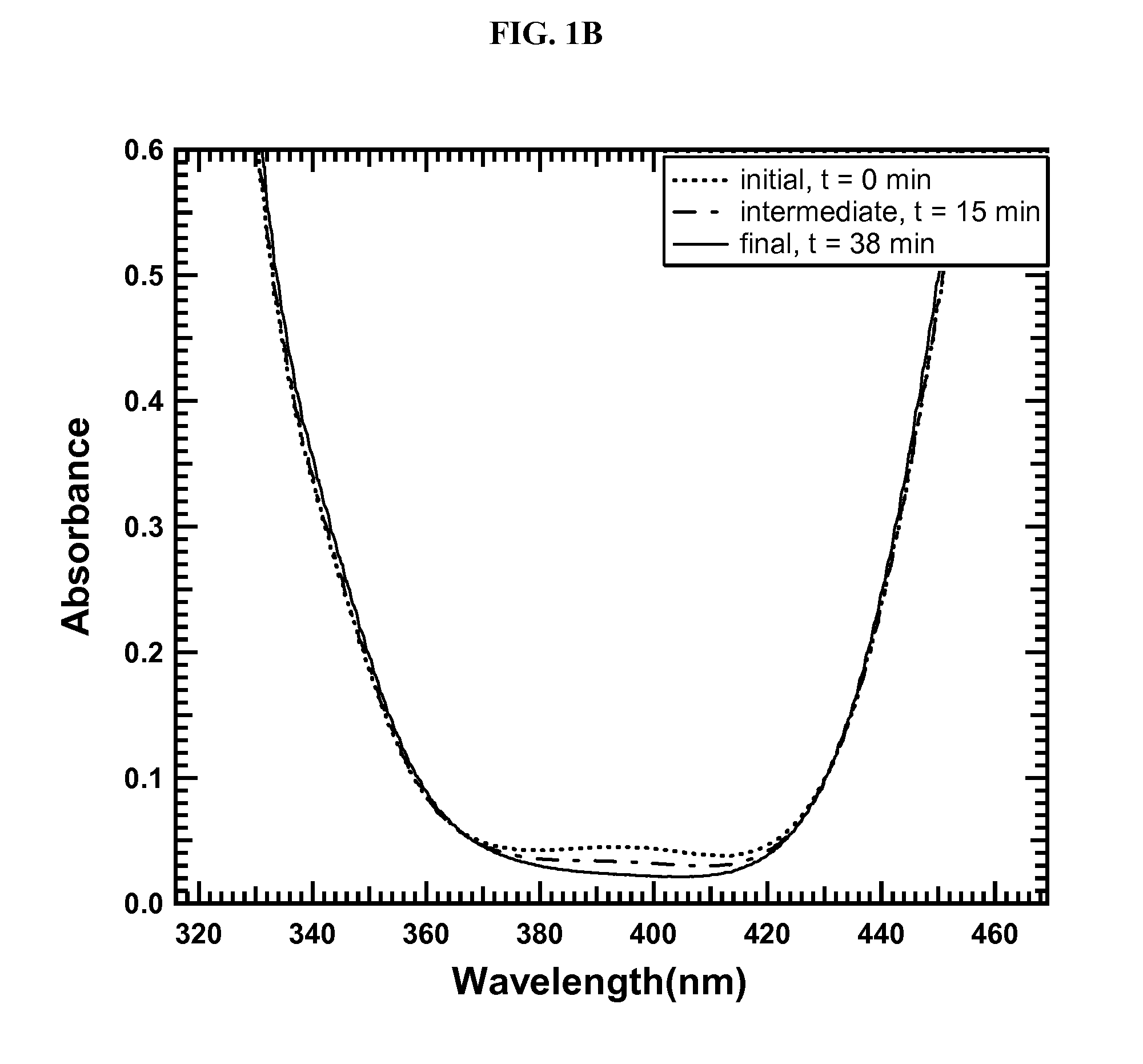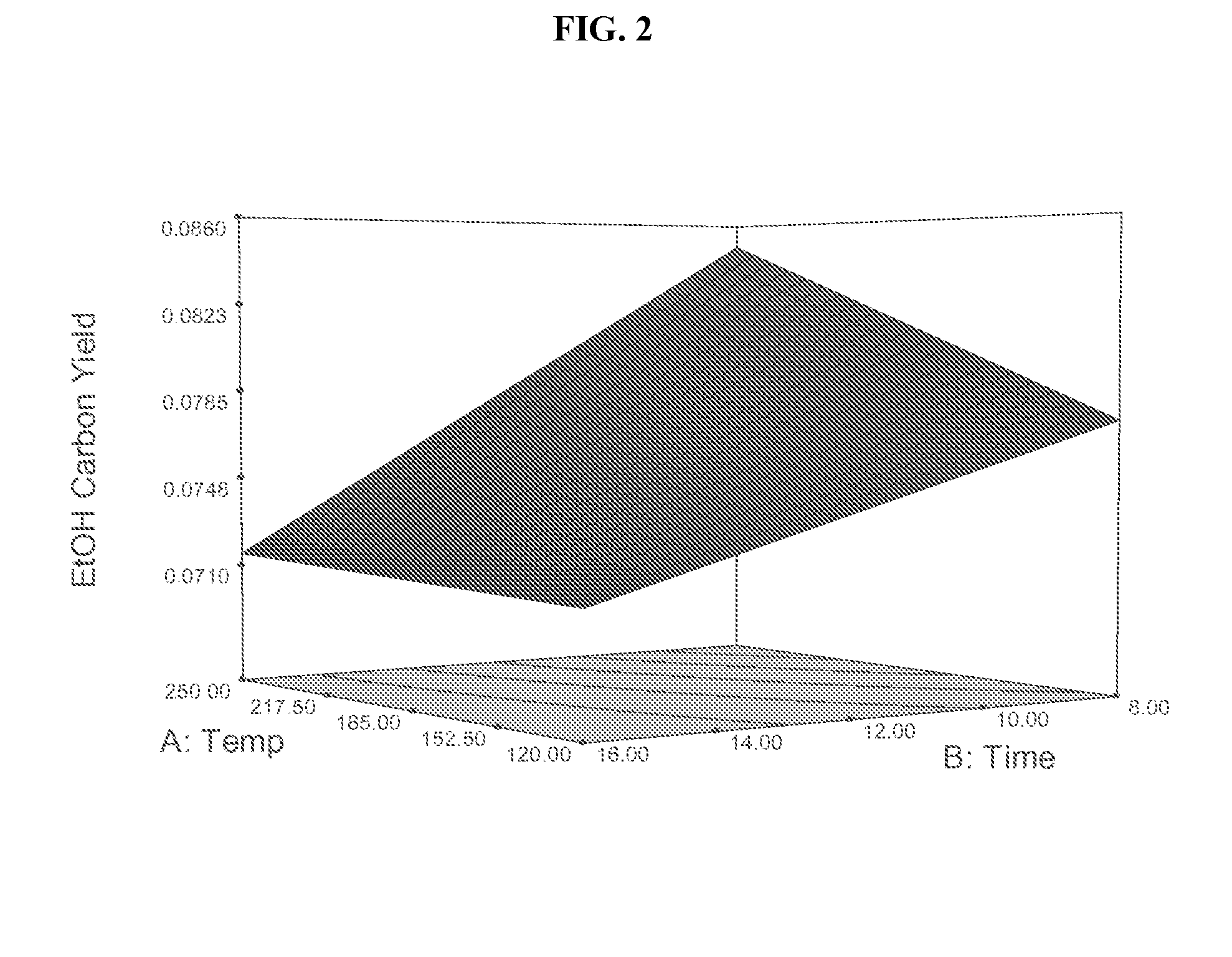Methods of making improved cobalt-molybdenum-sulfide catalyst compositions for higher alcohol synthesis
a technology of cobalt and molybdenum sulfide, which is applied in the preparation of oxygen-containing compounds, physical/chemical process catalysts, metal/metal-oxide/metal-hydroxide catalysts, etc., and can solve problems such as chemistry difficulties
- Summary
- Abstract
- Description
- Claims
- Application Information
AI Technical Summary
Benefits of technology
Problems solved by technology
Method used
Image
Examples
example 1
[0109]This Example 1 demonstrates UV-Vis detection of exemplary conversion of oxytrithiomolybdate to tetrathiomolybdate species in solution.
[0110]FIG. 1A depicts a UV-Vis spectra scan from about 200-600 nm in radiation wavelength. FIG. 1B highlights the wavelengths of particular interest from FIG. 1A, namely 320-470 nm. FIG. 1B shows the disappearance of oxytrithiomolybdate species in solution over a period of 38 minutes, suggesting complete or nearly complete conversion of oxytrithiomolybdate to tetrathiomolybdate in this time period.
[0111]In addition to the absence of a peak at about 396 nm, FIG. 1A shows three absorbance bands related to ATTM at about 468 nm, about 317 nm, and about 242 nm (±1.5 nm for each transition, per instrument resolution).
example 2
[0112]This Example 2 describes the application of Design of Experiments methodology to statistically evaluate experimental effects associated with drying and calcination of cobalt-molybdenum-sulfide precipitates to form precursor powders.
[0113]The study includes drying dwell times of 8 and 16 hours, along with drying temperatures of 120° C., 185° C., and 250° C. in a full factorial. After drying, calcination is conducted at about 500° C. for about 1 hour to generate a precursor powder which is then promoted with potassium to form a finished Co / Mo / S / K catalyst powder. Experimental responses are then generated by testing this finished Co / Mo / S / K catalyst in a test reactor at 310° C., 1270 psig, about 3900 GHSV, and H2 / CO=1.6 including 7% CH4 and 7% CO2 in the feed.
[0114]The experimental results suggest that higher drying temperatures and low dwell times are generally favorable. Decreasing the production of hydrocarbons (such as methane) can be achieved by drying at a temperature lower ...
example 3
[0117]In this Example 3, certain variations of the present invention are carried out, for illustration.
[0118]In step 1, ammonium dimolybdate, [NH4]2[Mo2O7], is dissolved in ammoniacal water. Ammonia is present in 15% excess of the stoichiometric reaction:
[Mo2O7]2−+2NH3+H2O →2[MoO4]2−+2[NH4]+
The molybdenum concentration is 0.3 molar.
[0119]In step 2, ammonium molybdate is converted to ammonium tetrathiomolybdate by reaction with H2S, utilizing about 4.2±0.1 moles H2S / mol Mo.
[0120]In step 3, a solution of cobalt acetate tetrahydrate is prepared, at about the solubility limit (approximately a 1 M solution).
[0121]In step 4, the cobalt acetate is added to the tetrathiomolybdate solution. An initial precipitate forms, but some thiomolybdate remains in solution. The result is a Co—Mo—S suspension.
[0122]In step 5, the precipitation is finished by pumping the Co—Mo—S suspension into a precipitation vessel. The vessel is initially charged with 2% v / v sulfuric acid solution. The volume of this ...
PUM
| Property | Measurement | Unit |
|---|---|---|
| Temperature | aaaaa | aaaaa |
| Temperature | aaaaa | aaaaa |
| Temperature | aaaaa | aaaaa |
Abstract
Description
Claims
Application Information
 Login to View More
Login to View More - R&D
- Intellectual Property
- Life Sciences
- Materials
- Tech Scout
- Unparalleled Data Quality
- Higher Quality Content
- 60% Fewer Hallucinations
Browse by: Latest US Patents, China's latest patents, Technical Efficacy Thesaurus, Application Domain, Technology Topic, Popular Technical Reports.
© 2025 PatSnap. All rights reserved.Legal|Privacy policy|Modern Slavery Act Transparency Statement|Sitemap|About US| Contact US: help@patsnap.com



